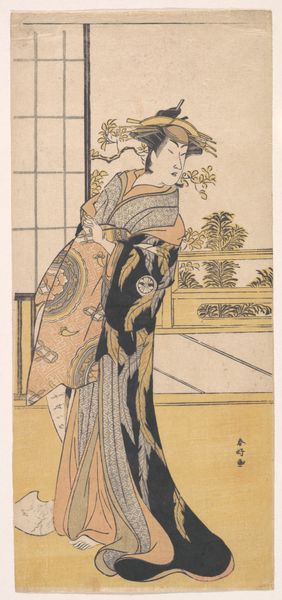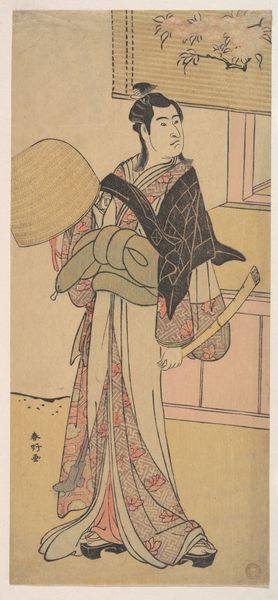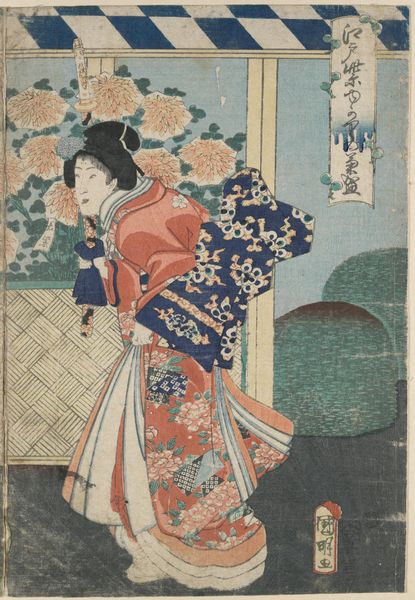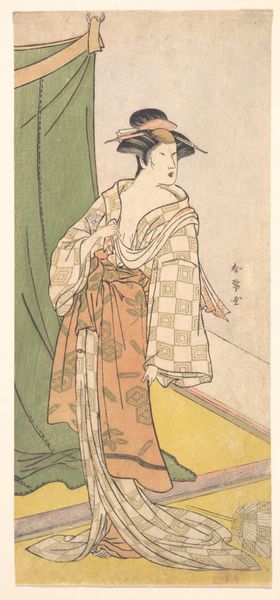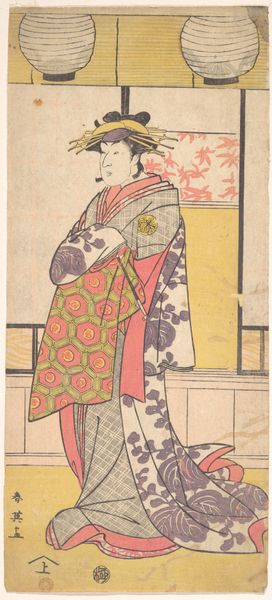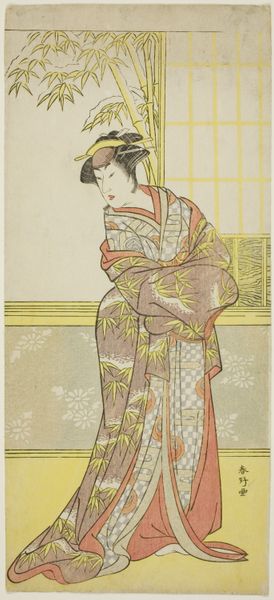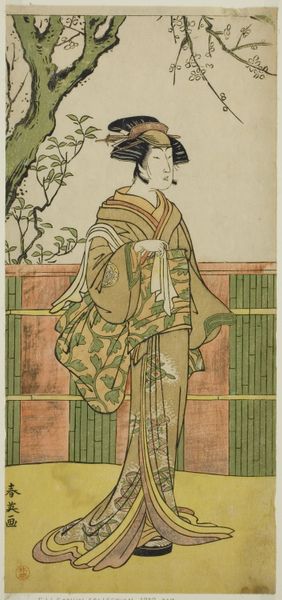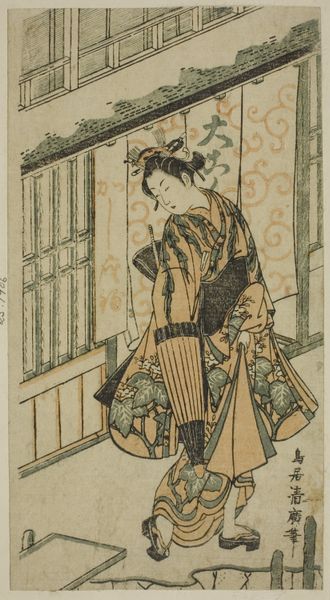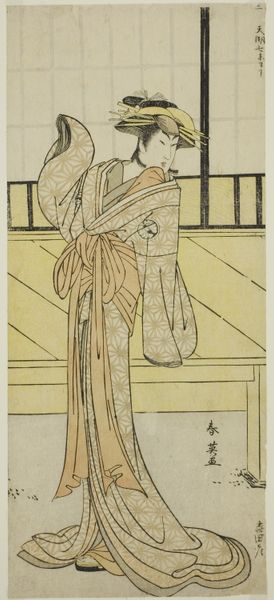
The Actor Segawa Kikunojo III as the Courtesan Takamura of Onoteruya (?) in the Play Sugata no Hana Yuki no Kuromushi (?), Performed at the Ichimura Theater (?) in the Eleventh Month, 1776 (?) c. 1776
0:00
0:00
print, woodblock-print
#
portrait
# print
#
asian-art
#
ukiyo-e
#
figuration
#
woodblock-print
Dimensions: 31.8 × 15 cm (12 1/2 × 5 7/8 in.)
Copyright: Public Domain
Curator: Just look at those lines. The actor's robe almost seems to blend into the architecture. There’s a remarkable flattening effect at play. Editor: Indeed. We’re looking at a c. 1776 woodblock print by Katsukawa Shunko titled "The Actor Segawa Kikunojo III as the Courtesan Takamura of Onoteruya (?) in the Play Sugata no Hana Yuki no Kuromushi (?), Performed at the Ichimura Theater (?) in the Eleventh Month, 1776 (?)," currently residing at the Art Institute of Chicago. It's an example of Ukiyo-e, but what strikes me first is the quiet melancholy. Curator: Melancholy definitely resonates. Though, let’s think about *who* this is depicting. Kabuki theatre at this time was a huge political space. For a man to play a woman – to embody this idealised form of femininity – questions all sorts of fixed gender categories. Editor: True. The act of impersonation itself is deeply connected to performance. This image, while seemingly still, captures the performance of femininity in a very deliberate, self-conscious way, shaped, I imagine, by the cultural conventions and audience expectations. But thinking about the actor, did his personal life, perhaps his own gender identity, intersect with the role? Curator: The relationship between the stage and societal realities of the Edo period would certainly allow us to see how transgressive acts might be temporarily permitted in theater, offering avenues for the subversion of rigid social norms and the safe performance of societal desires and repressed identities. The “floating world” of the Ukiyo-e had it’s limitations, but it explored a liminality worth discussing. Editor: Well said. Considering the prevalence of censorship at the time, the image also stands as an act of documentation, recording an event otherwise not easily made public. That said, are we perhaps idealizing the idea that such expression created avenues for real progress? Curator: I agree, there were many things this theatre could *not* change for certain individuals and marginalized communities in this moment, though these performative images allowed the culture at least *look* at different realities. But you've given me much to ponder regarding the influence of these types of popular artistic documentations... Editor: Precisely. I leave seeing something that I could study for days on end. I might need to schedule a visit to see it in person very soon.
Comments
No comments
Be the first to comment and join the conversation on the ultimate creative platform.


